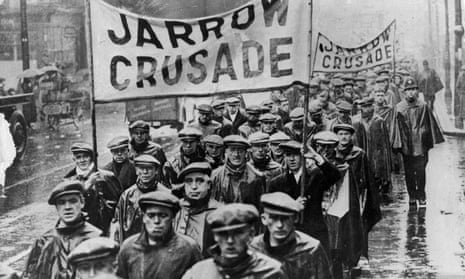Unemployment in Britain and the US could surpass the levels reached during the 1930s Great Depression within months as the coronavirus crisis crushes the global economy, a former Bank of England official has warned.
In a stark forecast as job losses mount around the world, David Blanchflower, professor of economics at Dartmouth College in the US and a member of the Bank’s interest rate-setting monetary policy committee during the 2008 financial crisis, said unemployment was rising at the fastest rate in living memory.
Writing in the Guardian, the economist said UK unemployment could rapidly rise to more than 6 million people, around 21% of the entire workforce, based on analysis of US job market figures that suggest unemployment across the Atlantic could reach 52.8 million, around 32% of the workforce.
“There has never been such a concentrated business collapse. The government has tried to respond but it has no idea of the scale of the problem it is going to have to deal with. We make some back-of-the-envelope calculations and they are scary,” he said.
Making the assessment alongside David Bell, an economist at the University of Stirling, the former Threadneedle Street policymaker said the collapse in activity amid Covid-19 and the accompanying rise in unemployment looked to be at least 10 times faster than in the recession triggered by the 2008 financial crisis.
The economists said that while government support in Britain for companies to furlough workers could help to cushion the blow, unemployment would still soar. While joblessness would rapidly rise, they cautioned it was uncertain how long the impact would last and how quickly unemployment would come down. During the Great Depression, records show unemployment hit 24.9% in the US and 15.4% in the UK over several years.
The warning shot for the two economies comes as business activity in Britain and the eurozone plunges to the lowest levels since the start of closely watched surveys more than two decades ago and as unemployment in the US begins to rise.
According to the latest snapshots from the purchasing managers indices (PMI), which are based on surveys of business activity, the private sector economy in the UK and the eurozone collapsed in March at the fastest pace since records began in the late 1990s.
The US economy also shed 701,000 jobs, according to March data, far more than the 100,000 fall expected on average by economists. The unemployment rate rose to 4.4%, up from 3.5% in February. Initial unemployment insurance figures, which come in advance of official figures, have suggested joblessness is already on track to reach more than 10 million.
Stock markets sold off on Friday as the prospect of lasting economic damage becomes increasingly clear. The FTSE 100 closed down more than 1% at 5,415, as share prices tumbled across Europe and the US.
The latest health check in Britain from IHS Markit and the Chartered Institute of Procurement and Supply (Cips) showed the onset of job losses last month as the government in effect shut down large swathes of the economy.
The PMI reading for manufacturing and service sector output, making up the vast majority of UK growth, crashed to 36.0 in March on a scale where anything above 50.0 separates growth from contraction. Down sharply from 53.0 in February, the reading was the worst since records began in 1996.
Duncan Brock, group director at Cips, said: “It’s increasingly difficult to find the words to describe the devastation as every region in the world fights to save human life as the first priority. The likelihood of a global recession is now a given, though its duration and severity has yet to reveal itself.”
Surveys of factory output and service sector activity in the eurozone also showed the biggest ever single monthly fall in March, setting the currency bloc on course for a deep recession.
The IHS Markit eurozone composite PMI plunged to 29.7 from 51.6 in February, the lowest since the survey began in 1998.
“In one line: horrid, hideous, harrowing … you get the picture,” said Claus Vistesen, chief eurozone economist at the consultancy Pantheon Macroeconomics. “We are struggling to come up with words to describe these numbers, which are now so far out of any reasonable range that they are difficult to interpret.”
